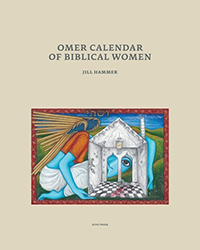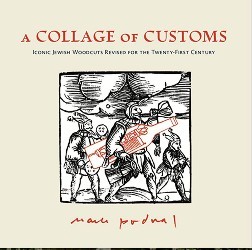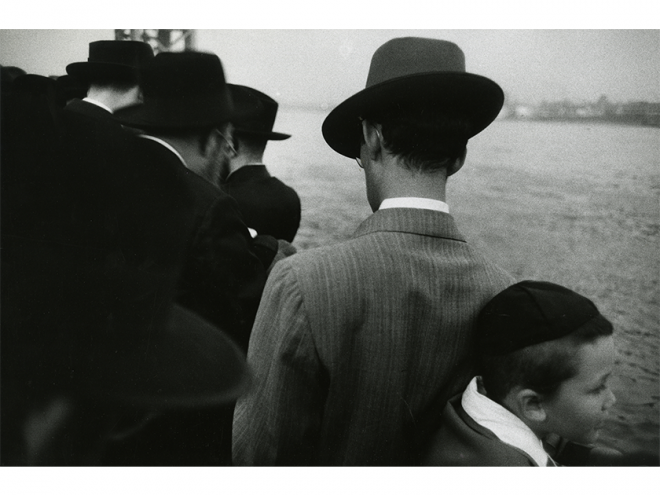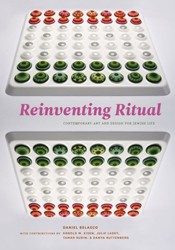By
– September 1, 2011
Exemplary photographs of 500 contemporary ceremonial art and ritual objects, this book is a purely visual record, accompanied by a minimum of text, mostly just the material specifications relating to the image. The selected works are the creations of 180 artists, the majority of whom are from the United States and Israel, but also included are artists from Australia, Canada, several European cities, New Zealand, and South America.
The introduction, written by Daniel Belasco, outlines three main areas of artistic influences that are reflected in the objects: the craft tradition which utilizes folk motifs and local ornamentation, abstract forms of the international style (simple unornamented lines) that originated in the post World War I period in Europe, and Post Modernism, which Belasco describes as a style begun in the 1970’s with artists interested in “reengaging modernism with the past…and expanding the references of Jewish ritual objects to connect the sacred to everyday life.”
Objects that are included run the usual gamut of Hanukkiot (menorahs) Sabbath candlesticks, Yads (Torah pointers) Mezuzot, Seder Plates, Spice Boxes, Etrog boxes, Dreidels, Purim Groggers (noisemakers), synagogue ritual objects such as arks, eternal lamps, and torah finials and mantles. More unusual objects are the feminist inspired items and some one-of-a-kind pieces such as the lulav holder or the kaddish stones. Materials used by the various artists include pristine as well as industrial metals, wood, ceramic, beads and stones, and found objects.
Fabric and paper art are also represented in challah covers, tefillin and talit bags and ketubbot (marriage contracts).
Unfortunately, there is no recognizable order in which the photographs are organized— not thematic, chronologic, alphabetical nor stylistic. An index to the artists is found at the end but no biographical information is given, no description of the technique employed, nor an explanation about the functionality of the objects is included. Rather, noting that the glossary contains only very basic definitions of the objects Belasco dismisses the omissions with “Additional resources are also easily available on the Internet.”
Belasco, an assistant curator at the Jewish Museum in New York, is listed as a “juror.” He doesn’t divulge what the criteria for selection in this volume were, which in our era of “full disclosure” can cause distrust.
Despite this caveat, people interested in creating their own Judaica or simply knowing what is available for the enhancement of Jewish ritual will find this a useful reference work. Glossary.
The introduction, written by Daniel Belasco, outlines three main areas of artistic influences that are reflected in the objects: the craft tradition which utilizes folk motifs and local ornamentation, abstract forms of the international style (simple unornamented lines) that originated in the post World War I period in Europe, and Post Modernism, which Belasco describes as a style begun in the 1970’s with artists interested in “reengaging modernism with the past…and expanding the references of Jewish ritual objects to connect the sacred to everyday life.”
Objects that are included run the usual gamut of Hanukkiot (menorahs) Sabbath candlesticks, Yads (Torah pointers) Mezuzot, Seder Plates, Spice Boxes, Etrog boxes, Dreidels, Purim Groggers (noisemakers), synagogue ritual objects such as arks, eternal lamps, and torah finials and mantles. More unusual objects are the feminist inspired items and some one-of-a-kind pieces such as the lulav holder or the kaddish stones. Materials used by the various artists include pristine as well as industrial metals, wood, ceramic, beads and stones, and found objects.
Fabric and paper art are also represented in challah covers, tefillin and talit bags and ketubbot (marriage contracts).
Unfortunately, there is no recognizable order in which the photographs are organized— not thematic, chronologic, alphabetical nor stylistic. An index to the artists is found at the end but no biographical information is given, no description of the technique employed, nor an explanation about the functionality of the objects is included. Rather, noting that the glossary contains only very basic definitions of the objects Belasco dismisses the omissions with “Additional resources are also easily available on the Internet.”
Belasco, an assistant curator at the Jewish Museum in New York, is listed as a “juror.” He doesn’t divulge what the criteria for selection in this volume were, which in our era of “full disclosure” can cause distrust.
Despite this caveat, people interested in creating their own Judaica or simply knowing what is available for the enhancement of Jewish ritual will find this a useful reference work. Glossary.
Esther Nussbaum, the head librarian of Ramaz Upper School for 30 years, is now education and special projects coordinator of the Halachic Organ Donor Society. A past editor of Jewish Book World, she continues to review for this and other publications.





